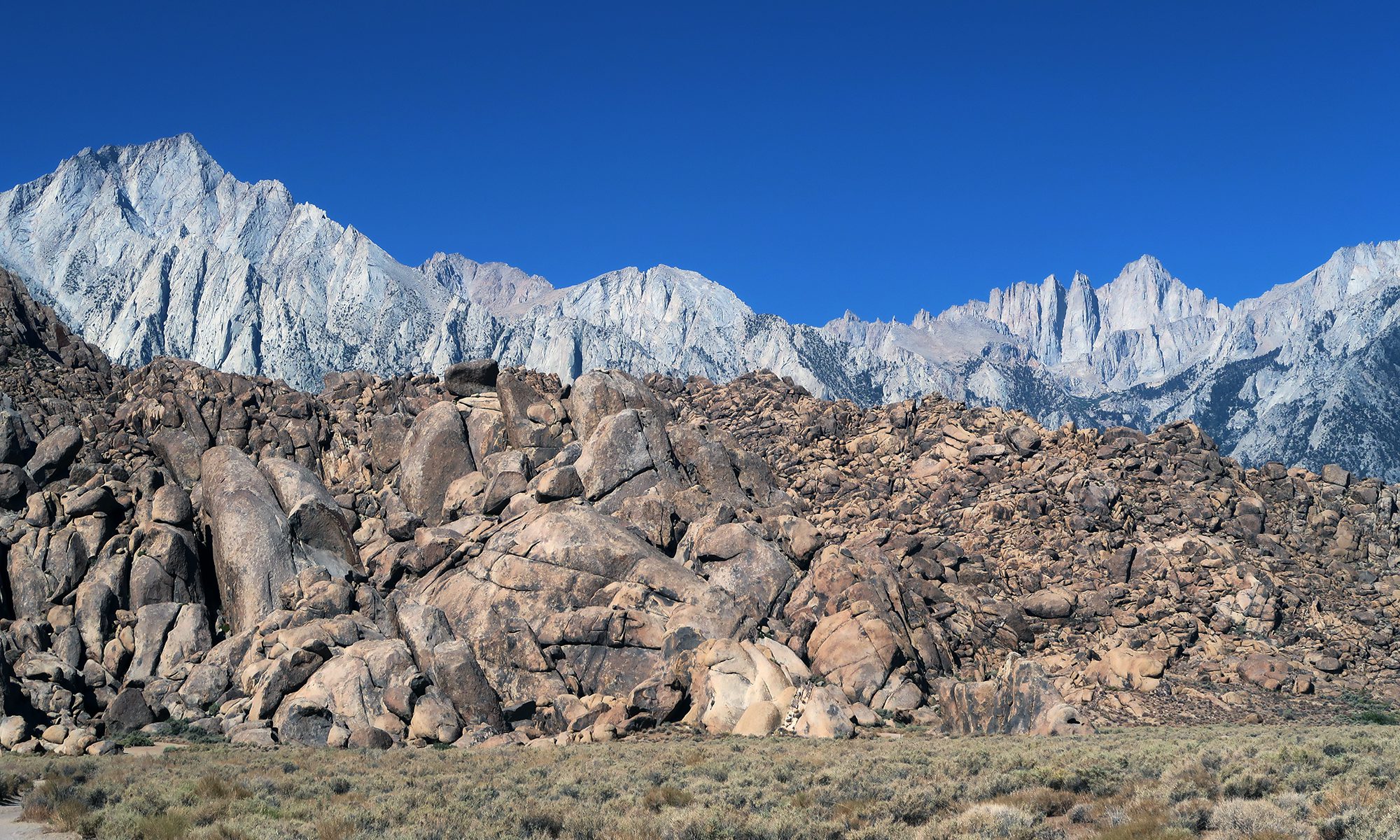August 6, 2020, Lone Pine
Alabama Hills amidst California Mountains
The morning after successfully summiting Mount Whitney, I joined a friend for some rock climbing in the nearby Alabama Hills. We had spent the night in Lone Pine, roughly 4000′ below the trailhead for Whitney.
Lone Pine sits in the middle of the Owens Valley, surrounded by the Sierra Nevada to the West and the Inyo Mountains to the East. The peaks rise to nearly 14,000′ on either side, making this perhaps the deepest valley in America. Smack dab in the middle of this dramatic landscape sits the Alabama Hills.

The hills most closely resemble giant piles of stone potatoes. They rise a mere 1000′ over the valley floor. And they’re named after the USS Alabama, a Confederate warship. Not the best look for what is already a geological also-ran. That said they’re home to some great dispersed camping options and some solid rock climbing routes.
Sport climbing some rebel spuds
Prior to this outing, I’d never rock climbed outdoors before. In fact, while I’ve been meaning to join a climbing gym, rock climbing has been more of a once-in-a-blue-moon thing for me. My companion that morning, on the other hand, was quite a seasoned climber. We pulled up to some routes he had picked out and got to climbing.
We started on a formation called “the tall wall” which was a lot further of a climb than anything I’d seen in a gym.

I watched my intrepid lead-climber compatriot slowly rise up the rock face, clipping in quick-draws as he went. Towards the top, his route turned somewhat sideways, as he approached the top anchor. After setting up the anchor, I lowered him back onto the dirt ground. Then it was my turn.
The rock was perhaps not the best for a n00b. The route was 5.6 or 5.7 or something (not very hard, I’m told). It was shallower than a sheer vertical face but made up for this by lacking any large handholds. I made it perhaps halfway up before getting a bit of vertigo.

We tried a few more routes, some easier, some more difficult. We had only a few hours before the sun would bake the Owens Valley up into the high 90s and beyond. It was a ton of fun, but exhausting, particularly after summiting a 14er the day prior. Eventually, I contented myself to belay and watch my friend tackle some more difficult routes. I definitely enjoyed the experience, but the main takeaway was: I need to get to a climbing gym!

A land robbed of water
The Owens Valley is dry, arid, and dusty. About as desert-y as most other Valleys in California (though not quite Mojave-level). But it wasn’t always this way. While the land sits in a massive rain shadow of the Sierras, ample snowmelt flows through the region, endowing it with a lush quality. Surrounded by mountains and home to fertile farmland, the area was once referred to as America’s Switzerland.
All that changed when Los Angeles began to surreptitiously buy up the water rights in the region. Decades of “water wars” ensued, with the region eventually being entirely drained on lakes and groundwater.
That said, the region is still quite stunning and beautiful. Dramatic mountain slopes rise both to the East and West.


